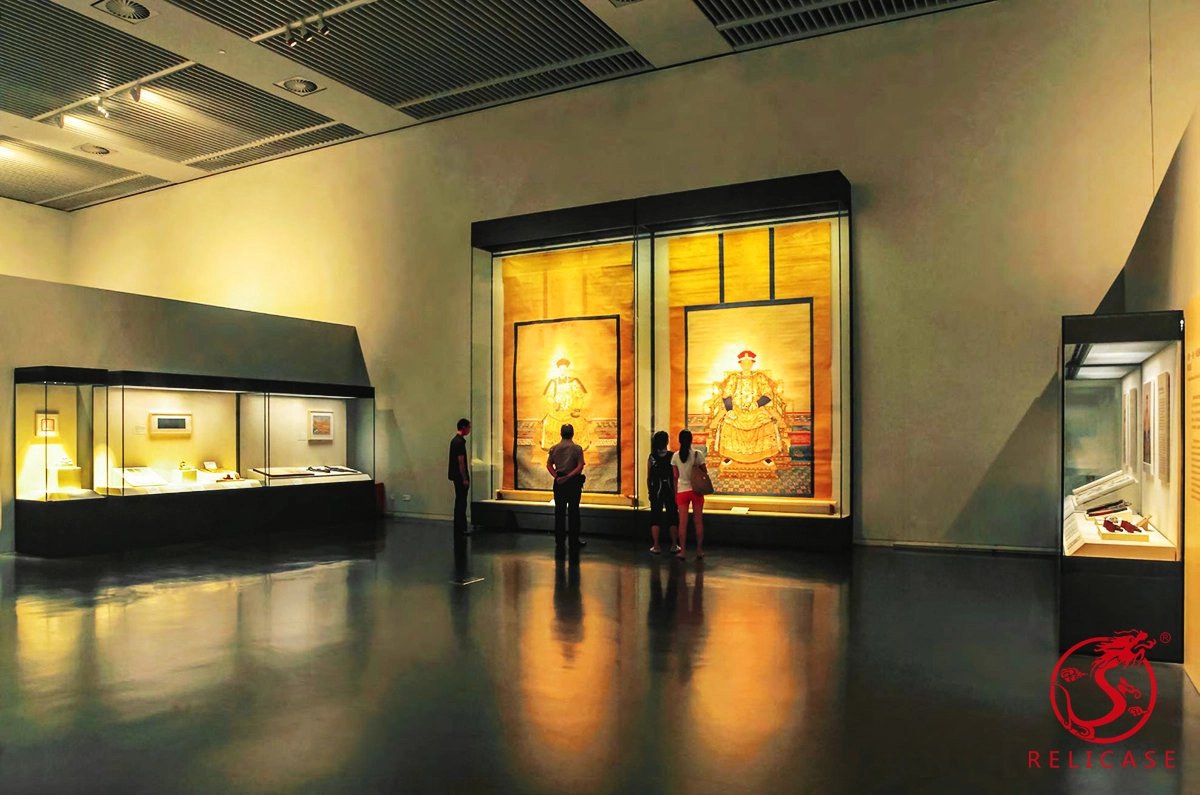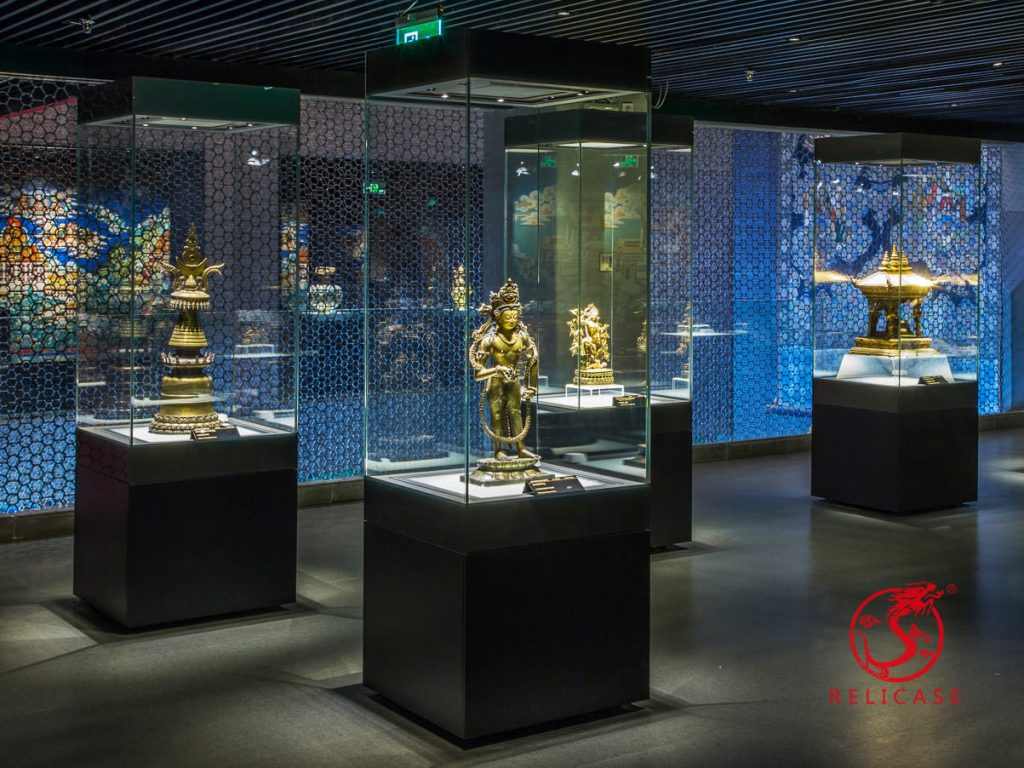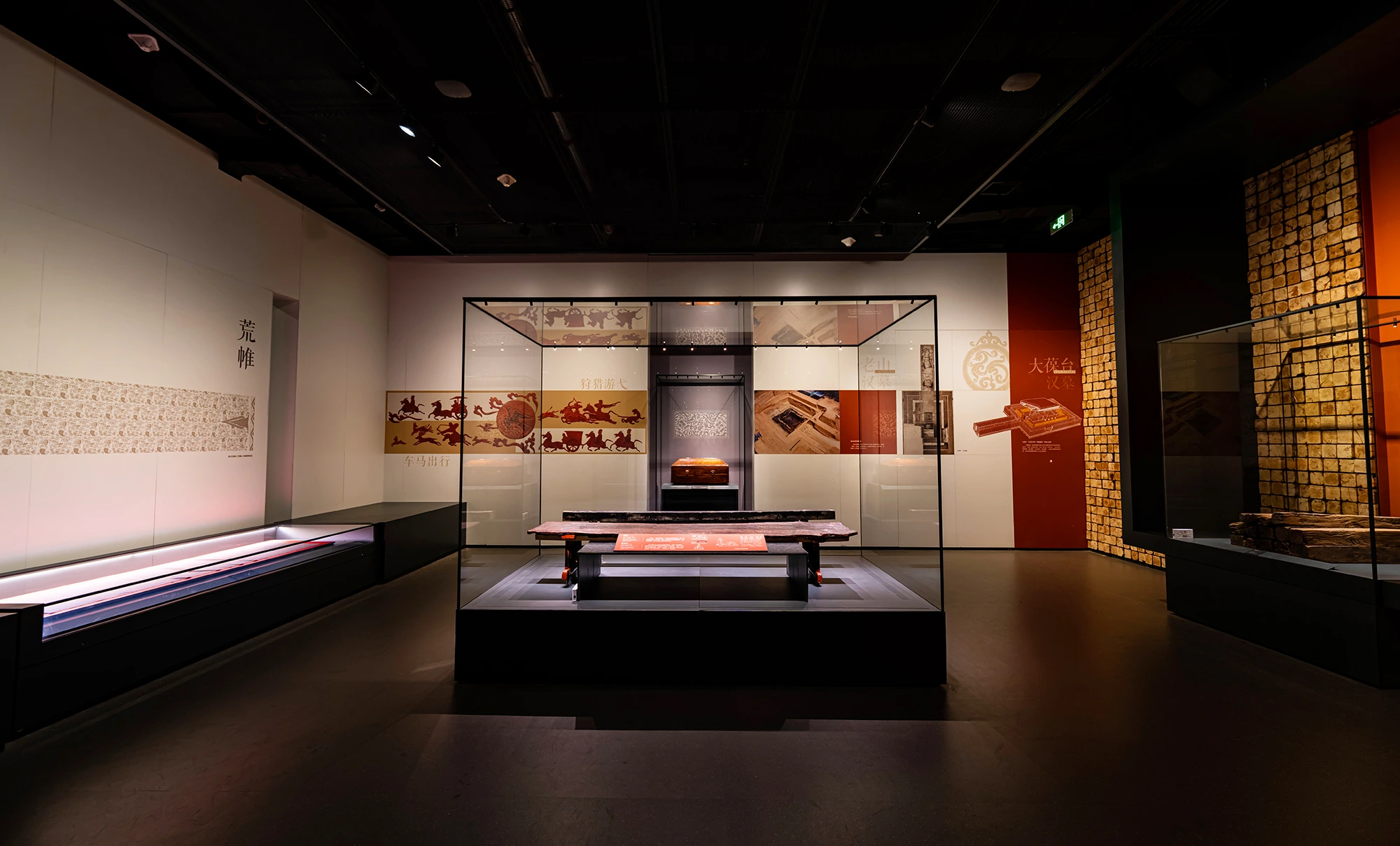How museum display cabinets protect exhibits

As museum showcases serve as the medium for displaying artifacts, it is essential to recognize that artifacts are non-renewable resources.
These artifacts are significant cultural heritage items with historical, artistic, and scientific value. The non-renewable nature of artifacts and their considerable historical, creative, and scientific importance necessitate meticulous attention to their safety during storage and display.
When artifacts are not on exhibit, they are typically stored in specially designed-museum storage rooms. These storage rooms, built specifically for preserving artifacts, are designed to carefully control temperature, humidity, lighting, and security to meet the artifacts’ needs.
Furthermore, these storage rooms are not open to the public, and museum staff rarely enter them, providing a highly secure and quiet environment for preservation.
However, the situation for artifacts on display is different.
They are moved from the comfortable environment of the storage room to a showcase and are presented for public viewing.
Ensuring the safety and preservation of these artifacts after they leave the storage room is the biggest challenge faced by museum exhibitions.
Museum showcases effectively address this challenge.
On one hand, they display the artifacts authentically and flawlessly, making them accessible for visitors to admire.
On the other hand, the showcases provide a safe and comfortable environment for the preservation and display of the artifacts.
The design and production of these showcases are tailored to the specific characteristics and requirements of the artifacts, ensuring that the showcases offer a secure and reliable preservation environment.
Specific Parameters for the Preservation and Display Environment Provided by Showcases for Exhibits, as Illustrated in the Following Table:
Table 1: Temperature and Relative Humidity Standards for the Preservation Environment of Museum Collections
| Materials | Collections Type | Temperature (°C) | Relative Humidity (%) |
| Metals | Bronze Ware, Iron Artifacts, Gold and Silver Ware, Metal Coins | 20 | 0 – 40 |
| Tin Ware, Lead Artifacts | 25 | 0 – 40 | |
| Enamelware | 20 | 40 – 50 | |
| Silicates | Pottery, Pottery Figurines, Tang Sancai, Yixing Zisha Ware, Bricks and Tiles | 20 | 40 – 50 |
| Porcelain | 20 | 40 – 50 | |
| Glassware | 20 | 0 – 40 | |
| Stones | Stone Tools, Stone Inscriptions, Stone Carvings, Stone Inkstones, Image Stones, Rock Art, Jade Artifacts, Gemstones | 20 | 40 – 50 |
| Paleontological Fossils, Rock and Mineral Specimens | 20 | 40 – 50 | |
| Polychrome Clay Sculptures, Murals | 20 | 40 – 50 | |
| Animals and Plants | Paper, Documents, Scrolls, Calligraphy, Traditional Chinese Paintings, Books, Rubbings, Stamps | 20 | 50 – 60 |
| Silk, Wool, Cotton, and Linen Textiles, Weaving and Embroidery, Clothing, Silk Books, Thangka Paintings, Oil Paintings | 20 | 50 – 60 | |
| Lacquerware, Wooden Artifacts, Wood Carvings, Bamboo Artifacts, Rattan Artifacts, Furniture, Woodcuts | 20 | 50 – 60 | |
| Ivory Items, Oracle Bone Artifacts, Horn Artifacts, Shell Items | 20 | 50 – 60 | |
| Leather, Fur | 5 | 50 – 60 | |
| Animal Specimens, Plant Specimens | 20 | 50 – 60 | |
| Others | Black-and-White Photographs and Film | 15 | 40 – 50 |
| Color Photographs and Film | 0 | 40 – 50 |
– The daily temperature variation in the environment should not exceed 2-5°C.

Table 2: Air Quality Standards for the Preservation Environment of Museum Collections
| Pollutants | Primary Standard Daily Average Concentration Limit (mg/m3) |
| SO2 | 0.05 |
| NO2 | 0.08 |
| CO | 4.00 |
| Ozon | 0.12 (1-Hour Average Concentration Limit) |
| Inhalable Particulate Matter | 0.12 |
Table 3: Pollutant Concentration Limits in Building Materials for the Preservation Environment of Museum Collections
| Pollutants | Maximum Allowable Concentration Limit (mg/m3) |
| Formaldehyde | ≤0.08 |
| Benzene | ≤0.09 |
| Ammonia | ≤0.2 |
| Radon | ≤200 BQ/m3 |
| Total Volatile Organic Compounds (TVOCs) | ≤0.5 |
Table 4: Lighting Standards for the Preservation Environment of Museum Collections
| Collections Type | Lighting Standard (LUX) |
| Collections Particularly Sensitive to Light Include: Silk, Wool, Cotton, Linen, and Other Textiles Weaving and Embroidery Items Chinese Paintings, Watercolors, Gouache, Ink Wash Paintings Prints Plain Paper and Calligraphy Rubbings Manuscripts, Documents, Books, Stamps Photographs and Images Murals Polychrome Clay Sculptures Polychrome Ceramics Dyed Leather Various Animal and Plant Specimens | ≤50 |
| Collections Sensitive to Light Include: Oil Paintings Egg Tempera Paintings Undyed Leather Horn Artifacts Bone Artifacts Ivory Items Bamboo and Wood Artifacts Lacquerware | ≤100 |
| Collections Not Sensitive to Light Include: Metal Artifacts: Bronze Ware, Iron Artifacts, Gold and Silver Ware, Weapons, Ancient Coins Stone Artifacts: Stone Tools, Statues, Stone Inscriptions, Inkstones, Fossils, Seals Silicate Artifacts: Pottery, Tang Sancai, Porcelain, Glassware Gemstones: Jewelry, Emeralds, Diamonds Enamelware, Enameled Artifacts, and Various Rock and Mineral Specimens | ≤300 |

While museum showcases focus on creating an optimal preservation and display environment inside the display cases, they also continually address potential external security threats that could impact or damage the exhibits.
These potential threats include general theft risks faced by all artifacts, as well as specific concerns such as seismic protection and radiation shielding for certain items.
To address these issues, museum showcases implement various measures to ensure the safety of the exhibits during display.
For example:
The materials used for constructing display cases should be non-toxic, non-polluting, and free from harmful gas emissions.
Fragile items such as ceramics, jade artifacts, and glass should be protected with vibration-dampening and shock absorption measures.
Display cases for silk artifacts should incorporate oxygen-free preservation measures.
Display cases for organic materials should include protection against harmful light radiation.
Display cases for storing artifacts should be made of anti-theft or bulletproof glass, combined with appropriate framing, and equipped with anti-theft locks.
Regular glass display cases should have alarm systems to monitor the artifacts inside.






